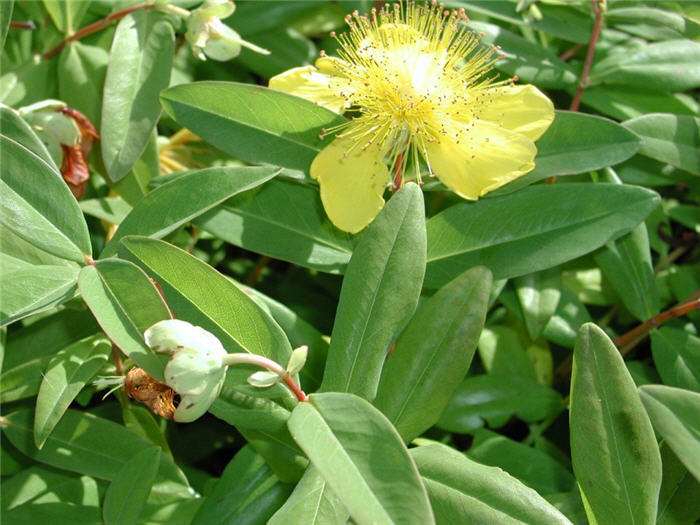| Botanical Name: Hypericum calycinum | |
| Common Name: Creeping St. Johnswort, Aaronsbeard |

-
Anatomy
-
Culture
-
Design
Plant Type
Broadleaf Evergreen, Shrub, Ground cover
Height Range
1-3'
Flower Color
Yellow
Flower Season
Summer, Fall
Leaf Color
Green, Blue Green, Light Green
Bark Color
Brown
Fruit Color
Red
Fruit Season
Fall
Sun
Full, Half, Shade
Water
Medium
Growth Rate
Fast
Soil Type
Sandy, Clay, Loam, Rocky, Unparticular
Soil Condition
Average, Poor, Well-drained, Dry
Soil pH
Neutral, Basic
Adverse Factors
Invasive
Design Styles
Formal, Japanese, Meadow, Mediterranean, Seascape, Woodland
Accenting Features
Showy Flowers
Seasonal Interest
Summer, Fall
Location Uses
Entry, Shrub Border, Parking Strip, Parking Lot, With Rocks
Special Uses
Erosion Control, Filler, Mass Planting, Naturalizing, Small Spaces
Attracts Wildlife
n/a
Information by: Stephanie Duer
Photographer: Engstrom/Mullany/MJC
Photographer: Engstrom/Mullany/MJC
-
Description
-
Notes
Hypericum calycinum is semi-woody perennial groundcover. It has attractive blue-green foliage that stays evergreen in mild winters, sometimes taking on a purplish hue. It has interesting bright yellow flowers June through September, followed by red berries. It grows 12 to 18 inches tall and 24 inches wide, and spreads by underground runners. Does well in dry shade areas.
Tops of the plants are sometimes killed in severe winters, but trimming off the dead wood in late winter to early spring keeps things tidy. As it blooms on new wood, winter damage doesn't typically affect bud production. Does well in sandy soils and in dry shade.